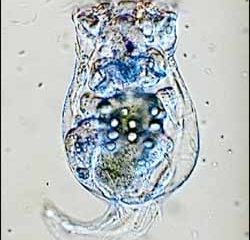Life Sciences and Chemistry
Articles and reports from the Life Sciences and chemistry area deal with applied and basic research into modern biology, chemistry and human medicine.
Valuable information can be found on a range of life sciences fields including bacteriology, biochemistry, bionics, bioinformatics, biophysics, biotechnology, genetics, geobotany, human biology, marine biology, microbiology, molecular biology, cellular biology, zoology, bioinorganic chemistry, microchemistry and environmental chemistry.

Newly identified plant proteins may shed light on the evolutionary process
A group of nuclear-envelope-associated proteins have been found in a plant for the very first time by a team of researchers at Ohio State University. Led by Professor Iris Meier, this new finding show that these proteins (Plant RanGAP and MAF) have in common a nuclear envelope-targeting domain which is unique to plants and distinctly different from sequences found in known animal nuclear envelope proteins.
This finding is significant because it implies that a funadamentally different nuclea

New approach to gene knockouts reveals the "master planners" of the skeleton
Howard Hughes Medical Institute researchers are moving closer to understanding how the global pattern of the skeleton of mammals is formed during development. In an exceptionally demanding series of experiments, the researchers knocked out entire sets of two families of genes suspected in playing a central role in establishing the pattern of the skeleton in the mammalian embryo.
Their findings regarding the “paralogous” gene families known as Hox10 and Hox11 establish that the genes

Link between neuronal calcium channel, mutated gene that causes Huntington’s disease identified
Abnormally high calcium levels spurred on by a mutated gene may lead to the death of neurons associated with Huntington’s disease, an inherited genetic disorder, characterized by mental and physical deterioration, for which there is no known cure.
This discovery by researchers at UT Southwestern Medical Center at Dallas, published in the current issue of Neuron, sheds new light on the process that causes the selective death of neurons in the region of the brain called the striatu

Evolutionary "fast-track" in which the hunted outwit their hunters, could explain why human diseases progress so rapidly
In the fishbowl of life, when hordes of well-fed predators drive their prey to the brink of extinction, sometimes evolution takes the fast track to help the hunted survive — and then thrive to outnumber their predators.
This rapid evolution, predicted by Cornell University biologists in computer models and demonstrated with Pac-Man-like creatures and their algae food in laboratory habitats called chemostats, could play an important role in the ecological dynamics of many predator-

A New Twist on DNA
Using a tool kit of lasers, tiny beads and a Lego set, Howard Hughes Medical Institute researchers have made the first measurement of the torsional, or twisting, elasticity of a single molecule of DNA.
The measurements reveal that DNA is significantly stiffer than previously thought and, when wound, may in fact provide enough power to be used as a sort of molecular, rubberband motor to propel nanomachines. Although that type of application may be well in the future, the studies are si

Obese mice provide clues to a natural system that puts brakes on obesity
First gene discovered that is switched on only in fat cells of obese mice
A gene that gets switched on only in the fat cells of obese mice may be a key to preventing obesity in humans, according to new research at The Rockefeller University in New York City and the Joslin Diabetes Center in Boston.
The finding, reported in the August 1 issue of the Journal of Clinical Investigation, marks the first time a gene has been identified that is induced, or activated, in the fat ce